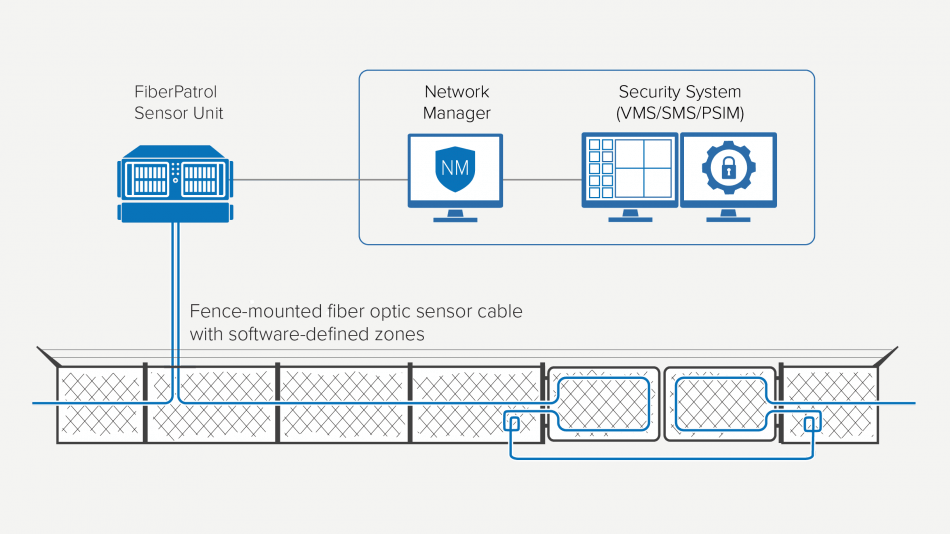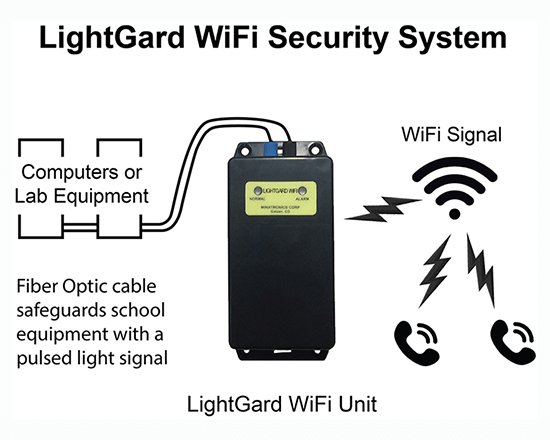Secure Your Residential Or Commercial Property With Reputable Fiber Optic Safety Solutions
In a period where security hazards are significantly innovative, the requirement for efficient defense remedies is extremely important. Fiber optic security systems stick out by offering extraordinary integrity and performance, leveraging advanced light transmission modern technology to improve surveillance abilities. These systems not only give immunity to electro-magnetic disturbance yet likewise promise long-term price effectiveness with reduced maintenance needs. The decision to spend in such an option includes mindful factor to consider of various variables. Recognizing the details of fiber optic protection can brighten the course to safeguarding your home better. What elements should be explored to maximize your financial investment?
Benefits of Fiber Optic Safety And Security
Fiber optic safety solutions supply a series of benefits that make them significantly essential in today's electronic landscape. One of one of the most significant benefits is their exceptional data transfer capacity, which permits the transmission of big quantities of data over fars away without substantial signal deterioration. This capacity is especially beneficial for protection systems that rely upon high-def video clip monitoring and real-time monitoring.
Furthermore, fiber optic cables are naturally much more protected than conventional copper electrical wiring. They are unsusceptible to electro-magnetic disturbance, making them less susceptible to hacking or eavesdropping. This enhanced safety is critical for safeguarding delicate data and maintaining the stability of monitoring systems.
Additionally, optical fiber are much more sturdy and immune to ecological variables, such as moisture and temperature changes, guaranteeing long-term reliability and decreased upkeep expenses. The light-weight nature of fiber optic cords also streamlines setup procedures, permitting for greater adaptability in system design.
How Fiber Optic Solution Job
In modern safety applications, the procedure of fiber optic systems depends on the concepts of light transmission through flexible glass or plastic fibers. These fibers are created to lug light signals over fars away with minimal loss, making them optimal for sending data associated with security monitoring. The core of the fiber, surrounded by a cladding material, makes certain that light signals stay consisted of within the core with a phenomenon referred to as overall inner representation.
When integrated right into safety systems, fiber optic cords can send data from different sensing units, such as electronic cameras, activity detectors, and alarms, to a central tracking terminal. The high bandwidth capability of fiber optics allows for the transmission of large amounts of data concurrently, enabling real-time security and punctual reaction to potential risks.

Types of Fiber Optic Protection Solutions
Various sorts of fiber optic security remedies have actually emerged to boost security and defense across different settings. One noticeable service is fiber optic border intrusion detection systems (PIDS), developed to check and protect property limits with my website the discovery of vibrations and disruptions along fiber optic cords. These systems offer real-time signals, allowing punctual responses to unapproved gain access to attempts.
One more effective service is fiber optic video clip security. This technology leverages high-definition electronic cameras connected using fiber optic cords to send video information over cross countries without significant loss of high visit quality. This arrangement is specifically valuable in extensive locations, such as airport terminals and industrial sites, where typical copper cable televisions might fail.
Furthermore, fiber optic sensing units are increasingly used for environmental tracking, discovering adjustments in temperature level, stress, or acoustic signals that could suggest security violations or hazardous problems. These sensing units supply high level of sensitivity and accuracy, making them excellent for critical infrastructure defense.

Installation and Upkeep Tips
Effective setup and upkeep of fiber optic safety and security services are essential for guaranteeing their ideal performance and long life. To start with, it is vital to intend the installment meticulously, considering the layout of the building and identifying potential vulnerabilities. Fiber optic cords need to be directed firmly, avoiding sharp bends or twists that can endanger their integrity. Use professional-grade ports and enclosures to make certain durable connections and protection from environmental factors.
Throughout installation, it is a good idea to carry out complete testing of the system to verify that all elements are working correctly. Regular upkeep checks should be set up to evaluate the fiber optic cable televisions for any indications of wear or damage, along with to make certain that links continue to be secure. Cleaning the connectors regularly is also important to avoid signal loss because of dirt or debris.
Moreover, maintaining an upgraded stock of installed components and their specifications can facilitate much easier troubleshooting and upgrades. By adhering to these setup and maintenance pointers, homeowner can optimize the effectiveness of their fiber optic protection solutions, making sure a trusted defense against prospective dangers.
Contrasting Costs and Efficiency
When examining fiber optic protection services, this page understanding the equilibrium between prices and effectiveness becomes paramount (security fibers). Organizations should think about the ahead of time financial investment, ongoing upkeep costs, and the lasting worth these systems supply. While fiber optic systems may call for a greater initial installment cost compared to conventional copper circuitry, their toughness and decreased susceptibility to electromagnetic disturbance often convert to lower upkeep costs in time
Effectiveness is one more essential factor; fiber optic security systems use boosted data transmission speeds and boosted integrity. They can cover bigger distances without signal destruction, making them perfect for large homes or remote places. The high data transfer capacity supports sophisticated safety applications, such as high-definition video monitoring and real-time tracking, which are important for extensive safety and security management.
Eventually, the choice between price and efficiency should be led by particular safety and security requirements and run the risk of analyses. Organizations needs to analyze their special requirements, considering aspects like residential property dimension, safety and security dangers, and technological innovations. By conducting a thorough cost-benefit evaluation, stakeholders can make informed choices that straighten with their safety and security objectives while making certain a sound financial investment in fiber optic modern technology.
Final Thought
In conclusion, fiber optic safety and security solutions supply considerable benefits in terms of performance, reliability, and immunity to environmental disturbances. Ultimately, the adoption of fiber optic modern technology represents a forward-thinking method to securing homes versus advancing protection dangers.